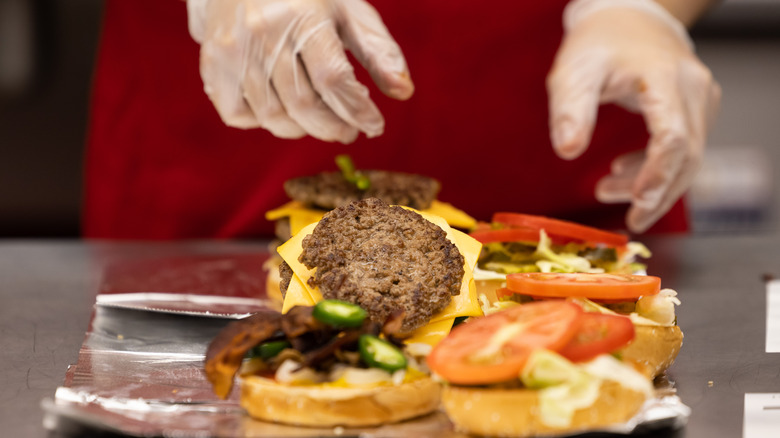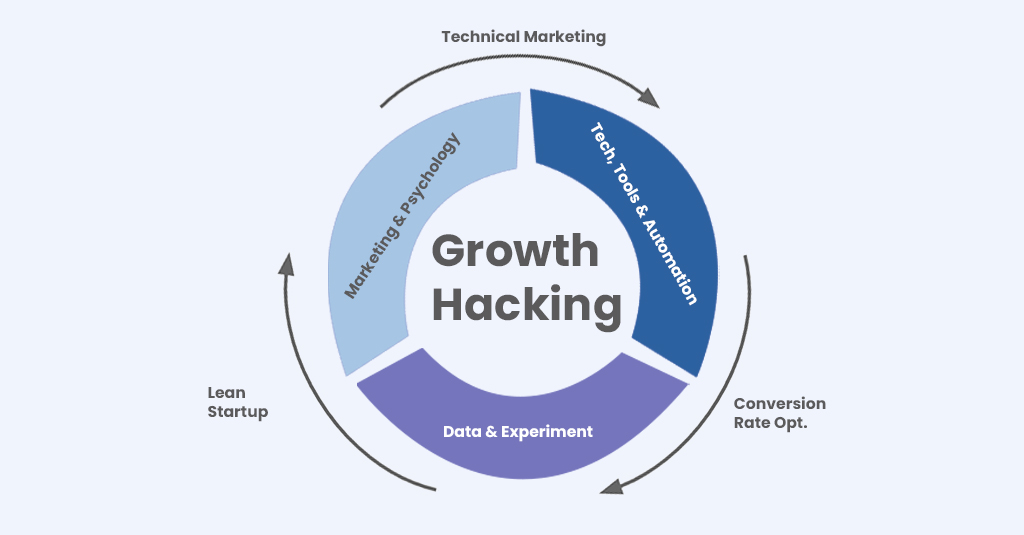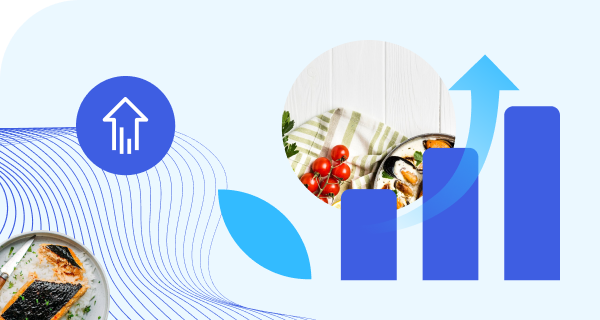
In today’s highly competitive food and beverage industry, it’s not enough to just offer great products. You need to be proactive in your approach to marketing and growth if you want to stay ahead of the curve. That’s where growth hacking comes in. Here are 20 growth hacking strategies that can help take your food and beverage business to the next level.
Understanding Growth Hacking in the Food and Beverage Industry
Before we dive into the specific growth hacking strategies, it’s important to understand what growth hacking is and why it’s important for food and beverage businesses.
What is Growth Hacking?
Growth hacking is all about quickly and efficiently growing your business. It involves using creative and unconventional strategies to acquire new customers, retain existing ones, and increase profits. The goal is to find the most effective ways to grow your business while minimizing costs and maximizing results.
For food and beverage businesses, growth hacking can involve a variety of tactics, such as creating engaging social media content, offering discounts and promotions, partnering with influencers, and optimizing your website for search engines.
Why is Growth Hacking Important for Food and Beverage Businesses?
In the food and beverage industry, growth hacking is critical because competition is fierce, and consumers have a lot of choices. To stand out, you need to be strategic and innovative in your approach to marketing and growth.
Growth hacking allows you to quickly test and iterate different strategies to see what works best for your business. By experimenting with different tactics and analyzing the results, you can identify the most effective ways to acquire and retain customers, and ultimately increase your revenue.
One example of growth hacking in the food and beverage industry is the use of pop-up restaurants. Pop-up restaurants are temporary dining experiences that can generate buzz and excitement around your brand. By creating a unique and memorable dining experience, you can attract new customers and build a loyal following.
Another growth hacking strategy is to partner with other businesses or influencers in your industry. By collaborating with others who have a similar target audience, you can reach new customers and expand your reach.
In addition to these tactics, it’s important to focus on creating high-quality products and providing excellent customer service. Word of mouth is a powerful tool in the food and beverage industry, and happy customers are more likely to recommend your business to others.
Overall, growth hacking is an essential part of any food and beverage business’s marketing strategy. By staying innovative and strategic in your approach, you can stand out in a crowded market and achieve long-term success.
Building a Strong Online Presence
A strong online presence is essential for any modern business, and it’s even more important in the food and beverage industry. With the rise of food bloggers, review sites, and online ordering, customers are more likely to discover and engage with your business online than through traditional advertising methods. Here are a few key strategies for building your online presence:
Creating a User-Friendly Website
Your website is often the first interaction customers will have with your business, so it’s essential to make a great first impression. In addition to being visually pleasing, your website should be easy to navigate and optimized for all devices. This means making sure your site is mobile-friendly and loads quickly, as customers are more likely to abandon a site that takes too long to load.
One way to improve the user experience on your website is to include high-quality photos of your products and menu items. This can help customers get a better idea of what your business has to offer and entice them to visit in person. You can also include customer reviews and ratings to build trust and credibility with potential customers.
Leveraging Social Media Platforms
Social media can be a powerful tool for food and beverage businesses. Platforms like Instagram, Facebook, and Twitter allow you to showcase your products, engage with customers, and run targeted ad campaigns.
When using social media, it’s important to have a consistent brand voice and aesthetic. This means using the same colors, fonts, and tone of voice across all your social media channels. You should also post regularly and engage with your followers by responding to comments and messages.
Another way to leverage social media is to partner with local influencers. These are individuals who have a large following on social media and can help promote your business to their audience. When selecting influencers to work with, make sure their values align with your brand and that their audience matches your target demographic.
Utilizing Influencer Marketing
Influencer marketing can be a highly effective way to reach new customers. By partnering with influencers who align with your brand, you can tap into their audience and build awareness for your business.
When working with influencers, it’s important to set clear expectations and goals for the partnership. This includes outlining the type of content they will create, how often they will post, and what metrics you will use to measure success. You should also provide them with guidelines on how to represent your brand and any specific messaging you want them to convey.
Overall, building a strong online presence requires a combination of a user-friendly website, social media engagement, and influencer marketing. By focusing on these key strategies, you can increase brand awareness, attract new customers, and grow your business in the competitive food and beverage industry.
Developing a Unique Brand Identity

Building a strong brand is essential for any business, but it’s especially important in the food and beverage industry. With so many options available, it’s crucial to differentiate yourself from the competition. Here are a few strategies for developing a unique brand identity:
Crafting a Compelling Brand Story
Your brand story should not only clearly communicate your mission, values, and unique selling proposition, but it should also be compelling and engaging. A great brand story can help your customers connect with your brand on a deeper level, making them more likely to become loyal customers. Consider using storytelling techniques to engage customers and differentiate yourself from the competition. For example, you could share the story of how your brand was founded or highlight the unique ingredients or production methods that set your products apart.
Another way to make your brand story more compelling is to highlight your brand’s values. For example, if your brand is committed to sustainability, you could share information about the steps you’re taking to reduce your environmental impact. This can help customers feel good about choosing your brand and can also help you attract environmentally conscious consumers.
Designing Eye-Catching Packaging
Your packaging is often the first thing customers see when they encounter your brand, so it’s essential to make a great first impression. Your packaging should be visually appealing and reflective of your brand identity. Consider using bold colors, unique fonts, or eye-catching graphics to make your packaging stand out on the shelf.
Another way to make your packaging more appealing is to use sustainable materials. Many consumers are becoming more environmentally conscious and are actively seeking out brands that use eco-friendly packaging. Consider using materials like recycled paper or biodegradable plastics to appeal to these customers.
Establishing a Consistent Brand Voice
Your brand voice should be consistent across all channels, including your website, social media, and advertising. This helps to create a cohesive brand identity and makes it easier for customers to recognize your brand. Your brand voice should also reflect your brand’s personality. Are you a fun and playful brand, or are you more serious and sophisticated? Use humor, emotion, or storytelling techniques to connect with customers and stand out.
Another way to establish a consistent brand voice is to create brand guidelines. These guidelines should include information about your brand’s tone, messaging, and visual identity. By following these guidelines, you can ensure that your brand is always presented in a consistent and professional manner.
By following these strategies, you can develop a unique brand identity that sets your business apart from the competition. Remember, building a strong brand takes time and effort, but the payoff can be significant in terms of increased customer loyalty and sales.
Implementing Innovative Marketing Strategies

To really stand out and grow your business, you need to get creative with your marketing strategies. Here are a few ideas to try:
Hosting Creative Events and Pop-ups
Pop-up events can be a great way to generate buzz and reach new customers. Consider partnering with other businesses or hosting events that align with your brand values.
Collaborating with Other Brands
Collaborating with other brands can be an effective way to reach new customers. Look for brands that share your target audience or have complementary products.
Offering Limited-Time Promotions
Limited-time promotions can create a sense of urgency and encourage customers to act fast. Consider offering discounts, free samples, or other incentives for a limited time to drive sales.
Conclusion
Growth hacking is all about testing, experimenting, and iterating to find the strategies that work best for your business. By implementing these 20 growth hacking strategies, you can stay ahead of the competition and take your food and beverage business to the next level.
